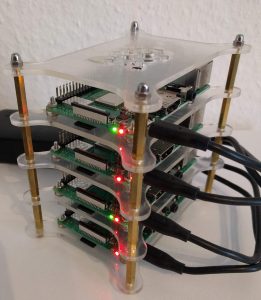 HowTo
HowTo
Kubernetes Cluster on Hetzner Bare Metal Servers
If you want to run your own Kubernetes Cluster, you have plenty of possibilities: You can set up a single node cluster using minikube locally or on a remote machine. You can also set up a multi node cluster on VPS or using managed cloud providers such as AWS or GCE. Alternatively, you can use hardware, e.g. Raspberry Pis or bare metal servers. However, without the functionality provided by a managed cloud provider, it is difficult to take full advantage of the complete high availability capabilities of Kubernetes. We have tried – and present here the instructions for a highly available Kubernetes cluster on Hetzner bare metal servers.
Read more “Kubernetes Cluster on Hetzner Bare Metal Servers”